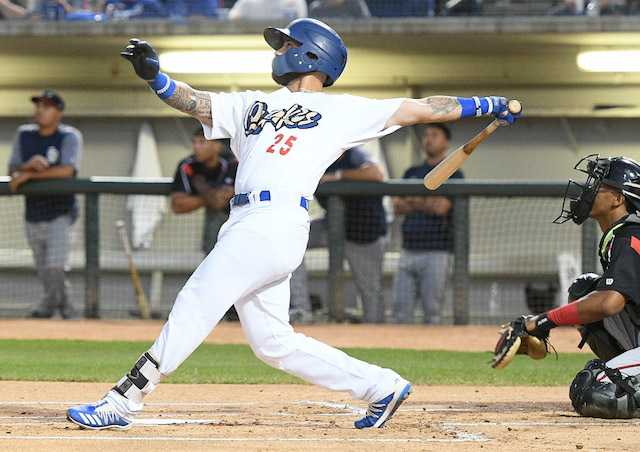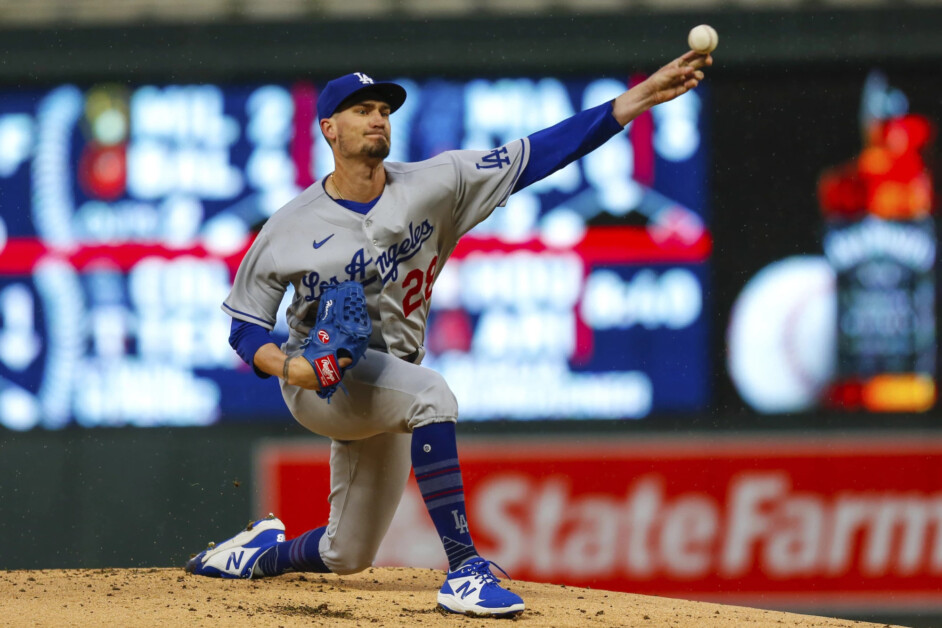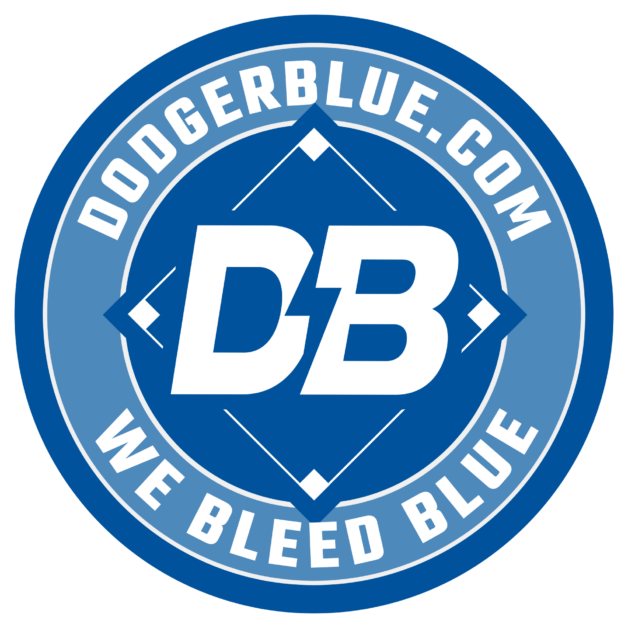After reviewing how select Los Angeles Dodgers pitching prospects fared during the 2019 season, it’s now time to look back on position players.
This began prior to the coronavirus (COVID-19) shutdown, which looks to have an even larger effect on Minor Leaguers, as the primary focus for the foreseeable future is getting back major league baseball.
Minor leaguers may ultimately be left out of the eventual solution, though some may be included in expanded MLB rosters.
As such, and to prevent the need to repeat myself with every player, any focus on what level a specific player might head to this season is done with the mindset of either a coming shortened season or a cancelled one, in which case everything would carry over to 2021.
The hitters listed below in alphabetical order, and league keys are below.
Dominican Summer League (DSL), Arizona League (AZL), Rookie Ogden (RK), Low-A Great Lakes (A), High-A Rancho Cucamonga (A+), Double-A Tulsa (AA), Triple-A Oklahoma City (AAA), Dodgers (MLB)
SS Jacob Amaya: (A) 103 games, .262/.381/.394, 6 HR, 15.7 BB%, 17.7 K%, 129 wRC+; (A+) 21 G, .250/.307/.375, 1 HR, 7.9 BB%, 16.9 K%, 87 wRC+
Amaya formed a dynamic duo with Miguel Vargas at the top of the Great Lakes lineup last season, and nearly walked as much as he struck out. He didn’t do quite as well in a late-season promotion to Rancho, but he should return there again this season, and could see Tulsa later on.
Amaya can play both middle infield positions, and even got an invite to Major League Spring Training, despite just 80 at bats in High-A. Amaya has good bat control, and a fantastic knowledge of the strike zone, giving him a higher floor than most players at his current level.
1B/OF Matt Beaty: (AAA) 32 games, .306/.378/.455, 3 HR, 7.4 BB%, 8.9 K%, 106 wRC+; (MLB) 99 G, .265/.317/.458, 9 HR, 6.3 BB%, 12.3 K%, 102 wRC+
Thrust into service due to injuries, Beaty proved he was ready for the big leagues in 2019. Playing corner outfield and infield, he impressed in his first shot in the Majors and cemented his role as a bench bat moving forward.
The new 26th roster spot makes it even harder to imagine Beaty not making the eventual Opening Day roster, provided he isn’t hurt.
2B Michael Busch: (AZL) 5 games, .077/.250/.077, 0 HR, 6.3 BB%, 12.5 K%, 20 wRC+; (A) 5 G, .182/.474/.182, 0 HR, 31.6 BB%, 16.8 K%, 131 wRC+
It’s not worth dwelling on Busch’s stats, as he only played ten games before injuring his hand on a hit by pitch. What is evident, though, is Busch’s exceptional plate discipline. Busch is a complete and advanced hitter, and if he can sufficiently play second base, he has the tools to be one of the better offensive second baseman in baseball.
Busch did primarily play first base and corner outfield in college, and he’ll likely hit enough even if he’s limited to those positions. Expect to see him in Rancho for a majority of the time this year.
C Diego Cartaya: (DSL) 13 games, .240/.316/.420, 1 HR, 8.8 BB%, 19.3 K%, 101 wRC+; (AZL) 36 G, .296/.353/.437, 3 HR, 7.3 BB%, 20.7 K%, 115 wRC+
The Dodgers’ most touted Latin American international free agent since Yadier Alvarez, Cartaya jumped to the states after just 13 games in the lowest rung of the Minors, the DSL, and showed why the Dodgers are so high on him.
From July 12 on, he hit .356/.414/.540 as a 17 year old in the AZL, 55% better than the league average.
Cartaya has drawn favorable comparisons to Salvador Perez, another large catcher, and looks to stay behind the plate in the future. His strong performance in the AZL should send him to Great Lakes to start this year.
SS Alex De Jesus: (DSL) 13 games, .296/.381/.444, 1 HR, 12.7 BB%, 22.2 K%, 129 wRC+; (AZL) 44 G, .276/.326/.374, 2 HR, 6.7 BB%, 32.6 K%, 93 wRC+
If Cartaya was the Michael Jordan of the Dodgers 2018-19 international free agent class, De Jesus was certainly the Scottie Pippen. De Jesus moved up to the AZL at the same time as Cartaya, and showed he belonged, despite being the second youngest player in the league.
De Jesus has an advanced hit tool, and while he may not stay at shortstop, he’s a decent bet to end up at second or third base. De Jesus could head back to the AZL, but might also see some time in Ogden or Great Lakes.
SS Jeter Downs: (A+) 107 games, .269/.354/.507, 19 HR, 11.3 BB%, 20.3 K%, 134 wRC+; 12 G, .333/.429/.688, 5 HR, 10.7 BB%, 17.9 K%, 207 wRC+
Downs, the second half of the return from the now-infamous trade with the Cincinnati Reds, started slow, but was one of the California League’s better hitters over the course of the season, and culminated in a promotion to Double-A, where he ravaged Texas League pitching, in albeit a small sample size.
As everyone is likely aware, Downs was traded to Boston, after the Red Sox reneged on a version of the deal which saw them receive Brusdar Graterol from Minnesota instead. Downs can make a Major League impact in the near future, and should be Boston’s second baseman of the future.
SS/2B Omar Estevez: (AA) 83 games, .291/.352/.431, 6 HR, 9.2 BB%, 20.8 K%, 119 wRC+
Estevez had another solid year, this time as one of the youngest players in the Texas League. He was hitting .333/.412/.456 with a 147 wRC+ before a leg injury cost him a month and a half, and he wasn’t as good when he returned.
Estevez has shown good pull power, but so far, that has manifested itself more in games as doubles than homers. He’s still quite young, at 22, and looks to have the floor of a bench middle infield bat in the future.
3B Kody Hoese: (AZL) 19 games, .357/.456/.643, 3 HR, 14.7 BB% 16.2 K%, 187 wRC+; (A) 22 G, .264/.330/.385, 2 HR, 7.8 BB%, 13.6 K%, 108 wRC+
The first of the Dodgers’ two first-round picks, Hoese hit well in his limited debut to pro ball. He’s long and lean, with an athletic swing and a Kris Bryant-type body, and saw a major breakout in his 2019 collegiate season, pacing the NCAA in homers for most of the season.
Expect to see him in Rancho soon.
OF Jeren Kendall: (A+) 96 games, .219/.319/.469, 19 HR, 12.4 BB%, 35.7 K%, 113 wRC+
Kendall, the Dodgers’ 2017 first rounder, has struggled professionally, repeating High-A last year as a 23 year old. He did have a hot stretch toward the end of the summer, keyed by mechanical adjustments that led his swing to resemble the one he had at Vanderbilt.
Strikeouts will always be a big part of his game, but with power, speed, and good defense, if he can ever hit enough, the package is there for a very useful Major League player. Kendall will likely move up to Double-A this year.
3B Brandon Lewis: (AZL) 12 games, .220/.327/.244, 0 HR, 10.2 BB%, 16.3 K%, 71 wRC+; (R) 32 G, .369/.423/.723, 12 HR, 7.0 BB%, 24.6 K%, 190 wRC+; (A) 12 G, .167/.245/.271, 1 HR, 7.5 BB%, 28.3 K%, 54 wRC+
Lewis, the Dodgers’ most recent fourth-rounder, had massive success in Ogden and earned a late-season promotion to Great Lakes. Lewis’ game is all about power, with a future profile centering around the three true outcomes.
He’s a third baseman for now, but could end up at first base in the future.
Look for him to head back to Single-A Great Lakes this season.
SS/2B Gavin Lux: (AA) 64 games, .313/.375/.521, 13 HR, 9.6 BB5, 20.6 K%, 147 wRC+; (AAA) 49 G, .392/.478/.719, 13 HR, 14.2 BB%, 18.1 K%, 188 wRC+; (MLB) 23 G, .240/.305/.400, 2 Hr, 8.5 BB%, 29.3 K%, 87 wRC+
There’s not much to say here that hasn’t already been said. Lux had one of the better Minor League seasons for a Dodger in recent memory, jumping two levels and making both his MLB debut and the postseason roster, while becoming the youngest Dodger ever to hit a playoff home run.
He’s the Dodgers’ second baseman of the foreseeable future.
2B Devin Mann: (A+) 98 games, .278/.358/.496, 19 HR, 10.6 BB%, 21.9 K%, 133 wRC+
Mann was this year’s Rylan Bannon, a mid-round draft pick who went straight to Rancho to begin his first pro season, and mashed way more than people were expecting. Mann saw time at both second and third base, and while defense isn’t his strong suit, his offensive progress really expanded his profile.
He may have been in line for a late season promotion to Tulsa, but an injury caused him to miss time, so he’ll see Double-A this year.
UTIL Zach McKinstry: (AA) 97 games, .279/.352/.455, 12 HR, 9.6 BB%, 19.3 K%, 126 wRC+; (AAA) 26 G, .382/.421/.753, 7 HR, 6.3 BB%, 18.9 K%, 177 wRC+
Another one of the system’s biggest breakouts, McKinstry capped off a stellar year by getting added to the Dodgers’ 40 man roster, over some more high profile names. He continued that progress into 2020 Spring Training, where he was hitting exceptionally well before the shutdown.
A 33rd-round pick less than four years ago, he’s remade his swing, and can play all over the field. It’s another diamond in the rough found/developed by the Dodgers, and McKinstry should see some time in the Majors this season.
OF Andy Pages: (R) 63 games, .298/.398/.651, 19 HR, 9.3 BB%, 28.3 K%, 155 wRC+
Pages made waves as an 18 year old in the Pioneer League with his massive homers, and reportedly has some of the best exit velocities in the Dodgers’ system. He was nearly traded with Joc Pederson and Ross Stripling to the Angels, and him remaining with the organization is certainly a positive.
Pages profiles as a prototypical right field in the future, and should head to Great Lakes for the first time this year.
OF DJ Peters: (AA) 68 games, .241/.331/.422, 11 HR, 9.7 BB%, 32.3 K%, 112 wRC+; (AAA) 57 G, .260/.388/.490, 12 HR, 12.9 BB%, 29.4 K%, 116 wRC+
The towering Peters is well known among fans for homering off Madison Bumgarner twice during a rehab appearance, and saw himself reach Triple-A for the first time last year, getting added to the Dodgers’ 40 man roster following the season.
Due to his size, the swing and miss issues are unlikely to ever go away, but he could be a very good starting outfielder if he can manage to get them more under control. Defensively, Peters is a future right fielder, but is still athletic enough to play some center.
He should head back to Oklahoma City this season, with his MLB debut a strong possibility at some point.
OF Zach Reks: (AA) 32 games, .310/.394/.584, 9 HR, 11.3 BB%, 20.3 K%, 169 wRC+; (AAA) 89 G, .284/.382/.520, 19 HR, 12.5 BB%, 27.0 K%, 119 wRC+
The Dodgers have shown time and again they will find good hitters with the ability to barrel the ball, and help them develop more power. Reks is another one of these stories, a former tenth round senior signee, who hit just seven homers in his first 1.5 pro seasons, and jumped up to 28 last year.
He’s changed hit entire hitting approach, and become a legitimate prospect. The downside is Reks is already 26, and is defensively limited to corner outfield or first base.
He’ll head back to Oklahoma City, with an outside chance of a Major League callup if needed.
1B/3B Edwin Rios: (AAA) 104 games, .270/.340/.575, 31 HR, 8.3 BB%, 34.5 K%, 112 wRC+; (MLB) 28 G, .277/.393/.617, 4 HR, 16.1 BB%, 37.5 K%, 161 wRC+
Rios finally made it to the Majors and showed in a short stint what he can do when he barrels the ball: hit it very, very far. Rios had the longest homer of any Dodger in 2019, and hit 35 homers across two levels last season.
His strikeout rate continued to climb for the third straight year, which is concerning, but he’s capable of hot streaks like few other players in the system.
Rios should split time between Oklahoma City and the Majors this year.
C Keibert Ruiz: (AA) 76 games, .254/.329/.330, 4 HR, 9.0 BB%, 6.8 K%, 88 wRC+; (AAA) 9 G, .316/.350/.474, 2 HR, 5.0 BB%, 2.5 K%, 99 wRC+
It was a bit of a down year for Ruiz, as he didn’t perform as expected in a repeat of Double-A. He did do well the week he got promoted to Triple-A, but was shelved on the injured list and missed the rest of the year shortly afterwards.
He’s still exceptionally young, at 21, and was the youngest player in the Pacific Coast League at the time of his promotion. Ruiz spent some time making some tweaks to his swing this spring before the shutdown. He’ll head back to Triple-A this year, and hope to build off some of those changes.
3B Cristian Santana: (AA) 102 games, .301/.320/.436, 10 HR, 2.4 BB%, 21.3 K%, 109 wRC+
Santana had a solid year in his first look at Double-A, showcasing his plus bat to ball skills and bat speed. His anemic walk rate is the continuation of a troubling trend that’s followed him throughout the minor leagues.
As evidenced by his stat line, he is a good hitter, but his approach needs to improve if he wants to make a Major League impact.
While Santana had a good enough year to earn a promotion, he’ll likely head back to Double-A for another go in his age 23 season.
C Will Smith: (AAA) 62 games, .268/.381/.603, 20 HR, 14.8 BB%, 18.1 K%, 130 wRC+; (MLB) 54 G, .253/.337/.571, 15 HR, 9.2 BB%, 26.5 K%, 132 wRC+
Now well known to fans, the Fresh Prince had himself a huge year, making his MLB debut and earning the Dodgers’ starting role, literally forcing his way into the lineup. The starter’s role will be all his during his sophomore season, and the recently-turned 25-year-old will get more experience handling one of the best pitching staffs in the Majors.
Cody Thomas: (AA) 130 games, .236/.308/.443, 23 HR, 8.6 BB%, 27.1 K%, 108 wRC+
Thomas, this year’s Spring Training hero, led the Texas league in homers last season, though had a bit of a streaky year. A former college quarterback who backed up Baker Mayfield at Oklahoma, he’s much more of a raw product than most 25 year old prospects, as he missed a couple years playing baseball.
The Dodgers chose not to protect him on the 40 man roster, and luckily, he wasn’t selected during the Rule 5 draft. Thomas should see his first shot at Triple-A this year.
3B Miguel Vargas: (A) 70 games, .325/.399/.464, 5 HR, 10.8 BB%, 13.3 K%, 150 wRC+; (A+) 54 G, .284/.353/.408, 2 HR, 8.5 BB%, 16.9 K%, 111 wRC+
If there’s one thing clear about Vargas, he can hit. Vargas reached High-A in his age 19 season, and dominated the Midwest League in the early months, a time of year, due to the weather and location, that’s often hard on hitters, especially those from Latin America.
But, the Cuban defector has displayed phenomenal barreling skills throughout his career, and it’s propelled him to his current lofty status. Evaluators are divided on Vargas, and whether he develops the power he’ll likely need to in order to make his bat viable for a corner infielder.
The Dodgers certainly have a track record for getting more power out of hitters like Vargas, and he’s only 20 years old, so there is cause for confidence. He should head back to Rancho this year, with a possible promotion to Tulsa in the works.
C Connor Wong: (A+) 71 games, .245/.306/.507, 15 HR, 7.0 BB%, 30.8 K%, 118 wRC+; (AA) 40 G, .349/.393/.604, 9 HR, 6.7 BB%, 30.7 K%, 175 wRC+
Caught up in the Dodgers’ catching backlog, Wong headed back to Rancho to start last year, but earned himself a midsummer promotion to Tulsa, where he absolutely raked to finish off the year.
He did so well, in fact, that the Red Sox desired him as the third piece in the revised Mookie Betts trade.
While he was regarded as the Dodgers’ fourth-best catching prospect, behind Smith, Ruiz, and Cartaya, Wong immediately became Boston’s best catching prospect, and looks like their catcher of the future.
Have you subscribed to our YouTube channel? It’s the best way to watch player interviews, exclusive coverage from events, participate in our shows, and more!










